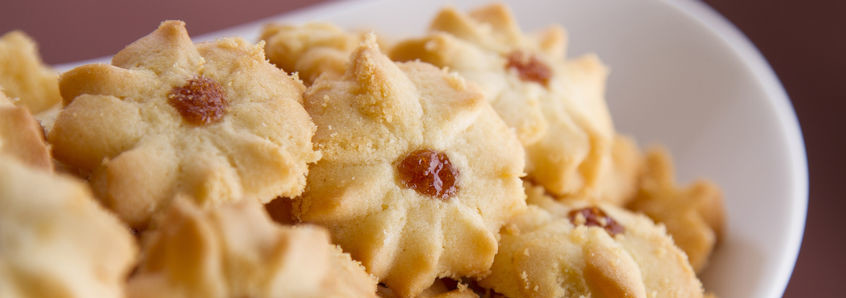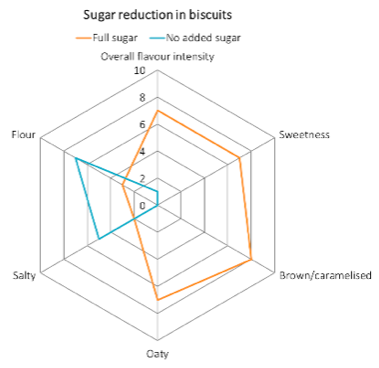
We all know that sugar and fat are critical ingredients in many baked goods, including cakes, pastries and biscuits. They not only contribute sweet taste and influence flavor perception, but have several important functional properties, including:
- Humectant
- Leavening
- Browning
- Caramelization
- Shortening
- Spread
- Flavor
- Mouthfeel
Preparing for sugar reduction in baking
As well as being a functional ingredient and adding sweetness to baked goods, sugar plays a very important role in the formation of flavor. If you simply remove or reduce the amount of sugar and fat in baked goods, you will need to overcome not just the challenges of flavor loss, but also issues with texture and structure, mouthfeel and indulgence loss, sweetness loss, shelf-life reduction and reduced visual appeal of the final product.
Some of the functional attributes that are lost can be replaced by using ingredients such as starches, polyols and fibers. However, when these ingredients are used, the mouthfeel and taste of the original product are still missing. Baked goods manufacturers need to seek solutions that can build back the flavor and mouthfeel in reduced sugar and fat products.
Approaches to try
Mapping the flavor of baked goods
To identify the specific flavor compounds that are lost in baked goods when sugar is taken out, several analytical and sensory techniques need to be employed. Below is an example using a biscuit recipe containing no added sugar compared with a full sugar biscuit.

The first step is to profile the two biscuits and make comparisons. As you can see from the above diagram, unsurprisingly, the no-added sugar variant scored zero for sweetness. What was interesting to see was the losses in caramelized brown notes, oaty notes and overall flavor intensity making for a very bland biscuit!
Our GC-MS analysis of the full sugar biscuit identified key ‘baked’ flavor compounds which contribute to the brown, caramelized and oaty notes identified by the sensory profiling.

Analytical and sensory data has been an essential tool in helping us to create flavor solutions that build back the sensory qualities lost in reduced sugar baked goods. We were able to establish that not only did we have to build back sweetness but also the indulgence, caramelized notes and typical oaty taste associated with digestive style biscuits.
Will our cakes and biscuits ever be the same?
While there may be some resistance from bakery manufacturers to adjust their recipes, unfortunately the governments’ increasing regulations are putting pressure on manufacturers to nutritionally improve our every day treats. Taking products right back to basics can really help to understand the complex matrix of baked goods and the role that sugar plays within that. By using this data we will be able to create nutritionally improved products that still taste great and feel indulgent.
Synergy Flavours has a range of flavor and mouthfeel solutions to help build back the sensory qualities in nutritionally improved goods. As an industry we know that some of our products could be healthier and it’s exciting to be exploring how to make this happen.. Our solutions enable bakery manufacturers to make substantial reductions in sugar without harming the overall consumer perception of the product.
We believe that there will always be a place for sweet products – but as indulgent treats. However, the standard baked goods that we are used to consuming daily will slowly move towards being sugar and fat reduced – but without the flavor loss consumers might be expecting. Sweet treats can be better for us when made with a sprinkling of innovation and a dash of creativity.
For a more in-depth look at how Synergy can help you to achieve your sugar reduction goal please contact us at 01492 492 222 or visit uk.synergytaste.com

